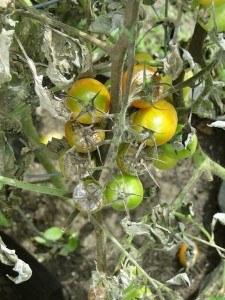s
 For more than 30 years, Wisconsin homeowners, businesses and agricultural producers have been able to turn to the Plant Disease Diagnostics Clinic (PDDC) at the University of Wisconsin-Madison/Extension for assistance in identifying plant diseases and control recommendations.
For more than 30 years, Wisconsin homeowners, businesses and agricultural producers have been able to turn to the Plant Disease Diagnostics Clinic (PDDC) at the University of Wisconsin-Madison/Extension for assistance in identifying plant diseases and control recommendations.
“The clinic was originally created to assist UW-Extension county agents and educators in plant disease diagnosis,” said Brian Hudelson, UW-Madison/Extension plant disease diagnostician. “Over the years, the clinic has expanded to also provide diagnostic services directly to growers – both commercial and consumer- and to plant health consultants.”
Hudelson said the clinic does diagnosis on virtually any plant you can imagine; the only thing he doesn’t work with is turf. If you have a sick plant you can submit a sample to the clinic, either through your county Extension office or directly to the lab.
Samples are submitted to the clinic, a diagnosis is determined using a variety of diagnostic techniques, and clients receive a personalized report with the results for their sample(s) as well as supplemental information-such as a University of Wisconsin Garden Facts fact sheet-on the disease in question. The report includes information on the plant disease identified, as well as appropriate control recommendations for clients, emphasizing cultural controls which would reduce possible misuse of pesticides.
“I see samples of field crops, forage crops, vegetables and fruits, and ornamentals,” Hudelson said. “The majority of samples I receive are typically ornamental samples; we do a lot of testing for oak wilt, root rots, leaf spots and blights.”
Hudelson said that although there are nominal charges for most testing, there is no fee for testing of late blight.
The Plant Disease Diagnostics Clinic also does soil testing for pea root rot, which can have a demonstrable economic impact to pea producers and canning companies in the state. If a canning company wants to contract with a grower to grow peas in the coming season, a sample will be brought in for diagnosis. If a canning company selects a field for pea production that the PDDC rates as a “good” field rather than a field of the same size that the PDDC rates as a “bad” field, the company has the potential of doubling its gross income on that acreage.
Information about contacting the clinic and submitting samples can be found at http://pddc.wisc.edu. The website also provides online resources such as fact sheets about plant diseases and the Wisconsin Disease Almanac which provides weekly updates about plant diseases identified in the clinic.



